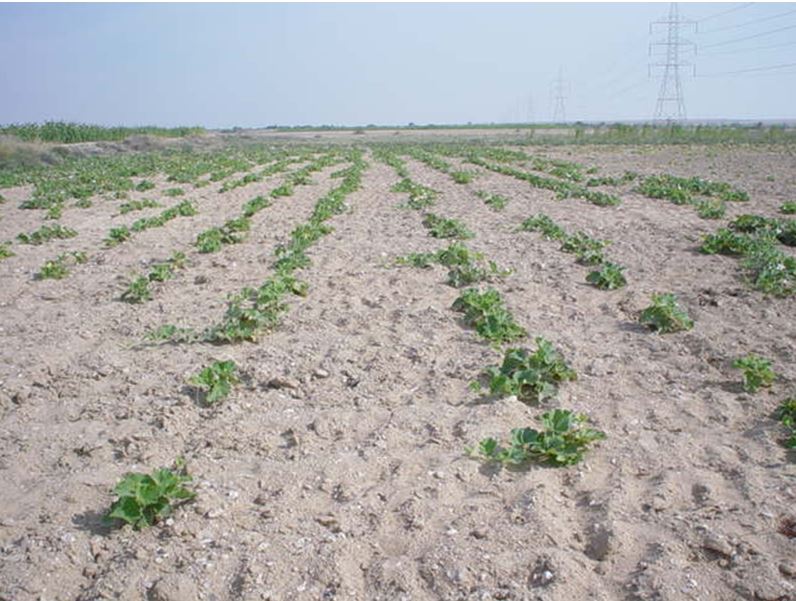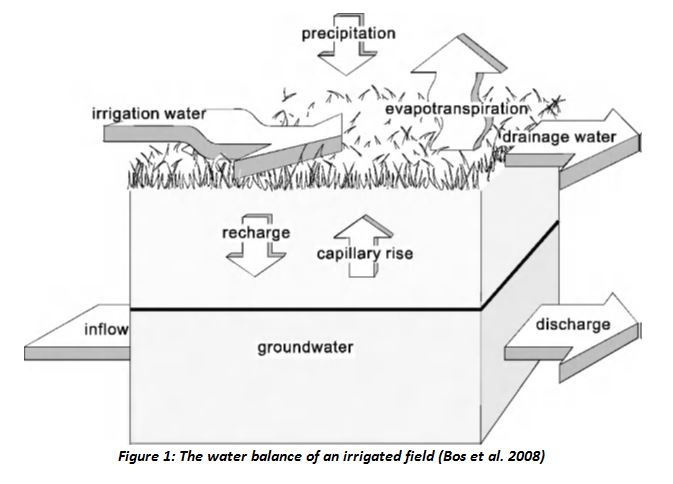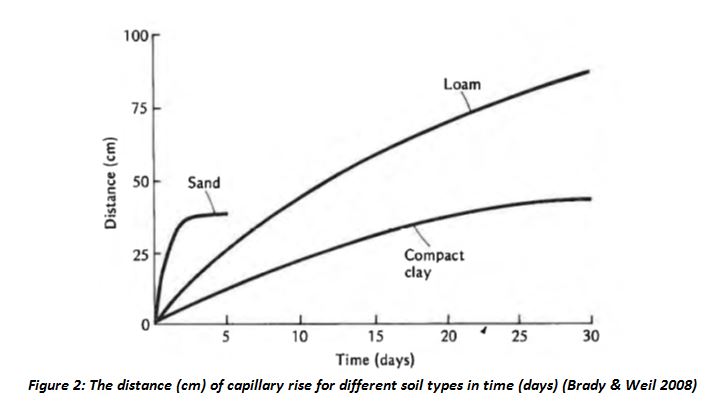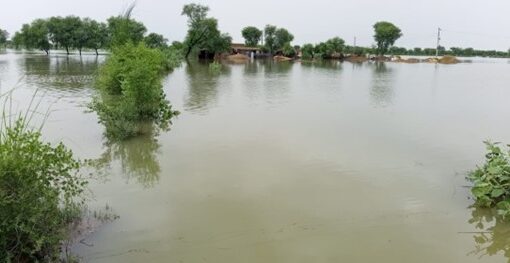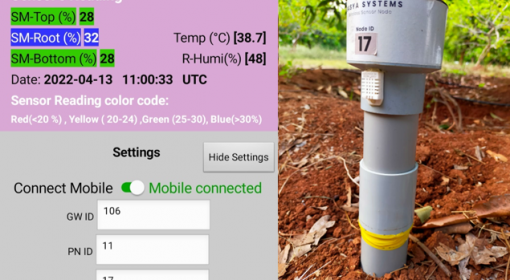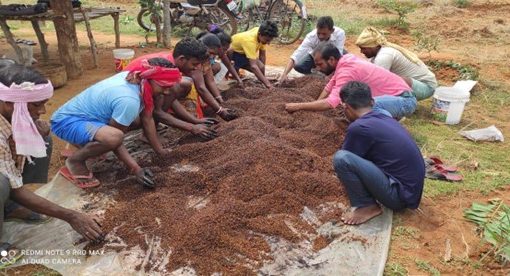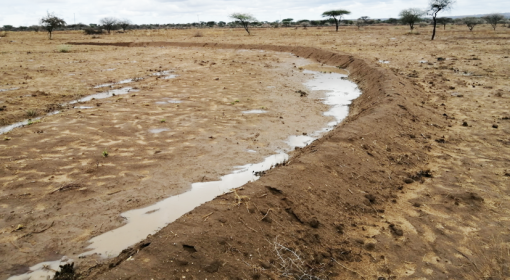by Matthijs Kool, Abraham Mehari Haile, Karim Nawaz and Frank van Steenbergen
December 12, 2016
In the Gash Spate Irrigation Scheme of Sudan, farmers are able to cultivate watermelon as a second crop in the end of October – long after the rains have fallen and the floods have been diverted. In the downstream areas of Flood-dependent water schemes in Raya Valley (Ethiopia), chickpea (Oda scheme) maize and barley (Guguf scheme) are also cultivated on seemingly zero rainfall, i.e. after the first crop (sorghum) has been harvested. In the drylands of Sindh in Pakistan the same can be observed: chickpeas are grown as a second crop long many months after the spate floods has been diverted to irrigate the land.
Farmers say that growing second crops is mainly possible because of capillary rise of moisture several months after the rainfall and flooding events. This resurgence of soil moisture from deeper layers through capillary rise is like a miracle water buffer, bringing moisture from deep in the dry season.
What is capillary rise?
Capillary action is the rise of moisture upward through the soil. In dryland areas it is an important – though little understood – source of soil moisture that makes rain-fed and flood based farming system more reliable than one would think.
Capillary rise is at work in all moist soils. In soil, there are many minute vertical channels – called micro-pores—through which the water descends when it rains. When it is dry, these same pores transport water upwards, due to the phenomena of capillarity and superficial tension during periods without precipitation / irrigation. The water drops cling to the soil and gradually climb their way up.
The crop roots use micro-pores in order to extract this capillary water. In dry areas this wonderful rise of soil moisture occurs late in the season, when temperatures (particularly at night) cool down significantly and air pressure is less, making it easier for the abundant moisture deposited in the bottom layers during the flood and rainy season to rise up.
The amount of water the crop can use from capillary rise depends on parameters such as the soil type, groundwater depth, rooting depth, precipitation, spate irrigation water delivery and evapotranspiration. Figure 1 shows an illustration of the water balance of an irrigated field.
Different soils, different effects
The abundance of medium to large sized capillary pores in sandy soils permits rapid initial capillary rise, but limits the ultimate height of the rise. Clays have a high proportion of very fine capillary pores, but friction forces a slow down of the rate at which water moves through them. Thus, capillary rise in clay soils is slow, but over time it exceeds capillary rise in sandy soils. Loam has capillary properties between those of sandy and clay soils (Brady & Weil 2008). Figure 2 plots the height (cm) of capillary rise for different soil types against the number of days it takes.
If the depth of the groundwater table is shallow (less than 3 m) and the soil is fine-textured, capillary rise can contribute a significant volume of water to the root zone of the crop (Bos et al. 2008). However, for the groundwater table to remain stable, groundwater must be fed by lateral inflow from precipitation, groundwater inflow and floodwater diversion. Otherwise the capillary rise will decrease as the groundwater table falls due to seepage and evapotranspiration. The end result could be the groundwater table falling to a depth from where the capillary flow rate is zero.
Capillary rise in rain-fed and flood-dependent farming and in permanent irrigation systems
Capillary rise is still discussed mainly in the context of salinization and over-irrigation in permanent irrigation systems. Especially in badly managed mega-irrigation systems with saline soils or groundwater, capillary rise can have a negative impact, as it brings salts to the surface. However, capillary rise in rain-fed and flood-dependent systems is little appreciated or understood – even though it contributes a lot to the reliability of rain-fed and flood-dependent farming.
Estimating the effect
Water from capillary rise need to reach the effective root zone of the crop in order for the crop to consume this water. The actual rooting depth of a crop varies with the type, variety, and age of the crop. As the actual rooting depth of irrigated crops is difficult to measure, only rough information will be available on this subject (Bos et al. 2008). For sorghum, the main crop cultivated in flood-irrigation dependent areas, the effective rooting depth for fully-grown crops is estimated between 1 -2 meters.
In order to make an estimation of the capillary flow, a step-wise pragmatic approach is recommended (Bos et al. 2008):
- Measure the actual evapotranspiration. This can be done by using high resolution images from satellites (Landsat or Aster) or using data from local weather stations;
- Measure precipitation, by using gauges from local weather stations;
- Estimate the volume of flood water diverted from a river or the amount of rainfall captured in water harvesting:
- Measure the depth of the groundwater table, for example by using an observation tube. As the groundwater table fluctuates gradually, one measurement per week will usually suffice;
- Determine the effective rooting depth of the irrigated crop;
- For the common soils in the area, the capillary rise for an upward flow rate of 0.5 and 2.0 mm/day needs to be determined; and
- The effective rooting depth needs to be subtracted from the depth to the groundwater table in order to see if this difference is less than the capillary rise at a unit flow rate of 0.5 and 2 mm/day
References
- Bos, M. G., Kselik, R. A., Allen, R. G., & Molden, D. (2008). Water requirements for irrigation and the environment. Springer Science & Business Media.
- Brady, N. C., & Weil, R. R. (2008). The nature and properties of soils, Fourteenth Edition Pearson Education Inc.
 |  |
